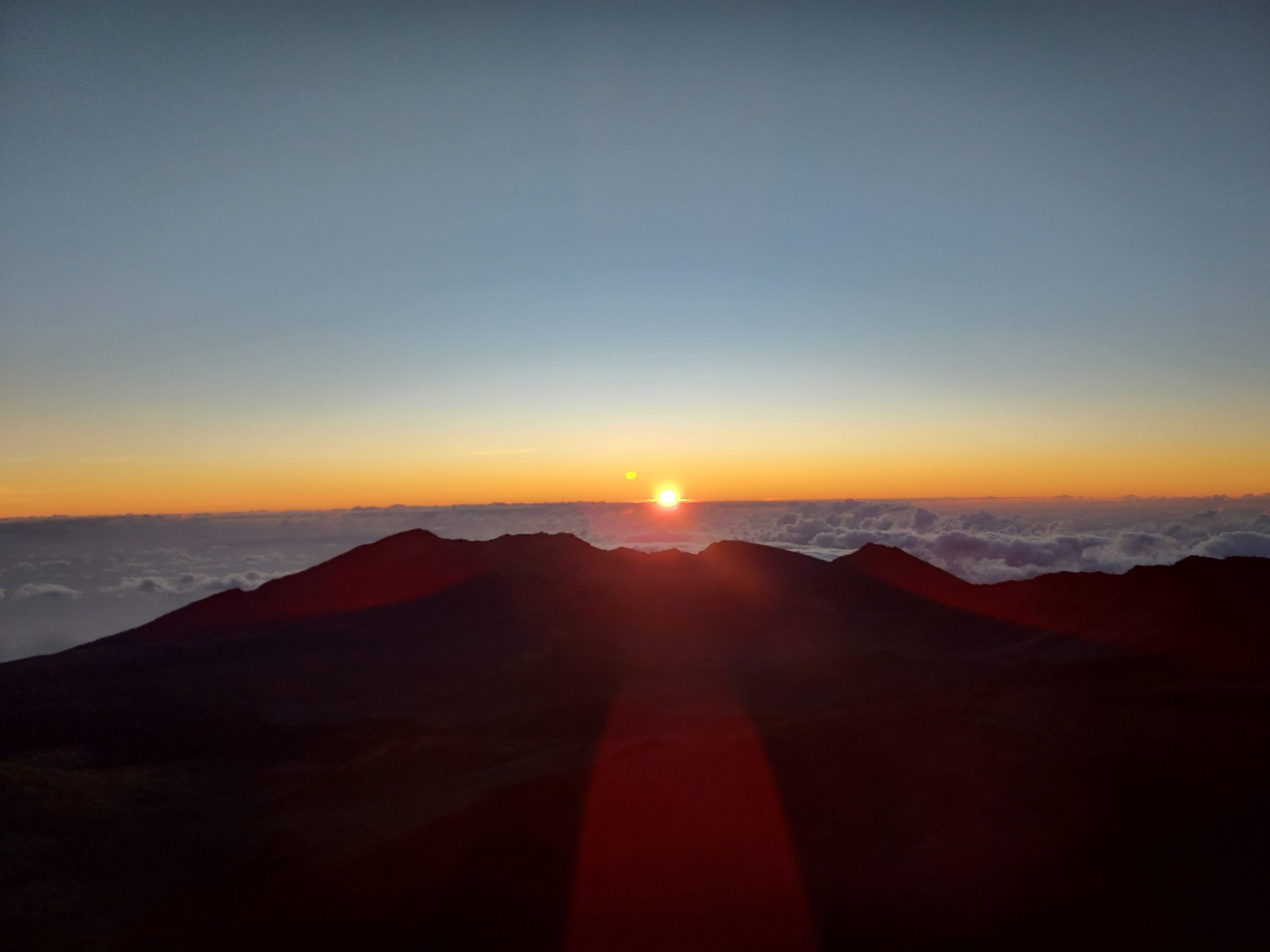From mauka to makai, Maui has many spectacular places to visit. Haleakala National Park (HNP) is one of those rare gems that encompass it all. From the alpine martian-like landscape of its summit to the welcoming waterfalls and rainforest at its coast, HNP showcases the best of Maui in its truest and most natural form.
Haleakala literally translates to house used by the sun, or house of the sun. It is here that the demigod Maui lassoed the sun to slow its journey in the sky. He wanted to lengthen the days so his mother, Hina, would have enough time to dry her kapa. It is home to a wealth of perse and native fauna and flora, most of which are endangered and found nowhere in this world. The HNP was established in 1916 to protect and care for this precious landscape. HNP covers more than 33,000 acres. About 19,000 acres is strictly protected wilderness area. It is pided into two sections – the summit area and the coastal Kipahulu area.
Although mistakenly and frequently called a crater, Haleakala is technically a volcanic windswept valley. Numerous volcanic features such as cinder cones and lava rock provide evidence of this dormant volcano’s fiery past. Most people go to watch the sunrise, but you can also go on a hike or spend a couple days camping by tent or in one of the cabins.
The Ahinahina’s (Silversword) is a native plant found only in Haleakala. If you don’t want to make the hike to see it, be sure to go to the visitors center where it grows as well. If you’re lucky, you may also come across some of Haleakala’s protected nēnē geese, which were at once on the brink of extinction. Today they are protected within the national park.
The coastal Kipahulu area of HNP is a completely opposite landscape than that of its summit. After a windy and picturesque drive on the Hana Highway, you are greeted by a lush rainforest and Ohe’o Falls (more commonly and erroneously called “Seven Sacred Pools”). Here you can camp here or swim in the icy pools. If you do decide to swim, however, please read all safety protocols and remember to use extreme caution as flash floods and rock slides can and do occur often. If swimming isn’t your thing, you can stroll along some of the area’s marked trails. Cultural activities are also offered at Kipahulu’s visitor center, as well as with the Kipahulu ohana.
If you decide to visit the Valley Isle on your Hawaii vacation, be sure to spend a day or two at HNP. Whether its to take a day hike, swim by a waterfall or learn about Hawaii’s natural wonders, you will not be disappointed in experiencing what the real Maui has to offer.
HALEAKALA NATIONAL PARK • Makawao, HI 96768 • Opens everyday 530am-3pm (Visitor Center) • www.nps.gov/hale • $10 entry fee per vehicle for 3 days




